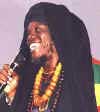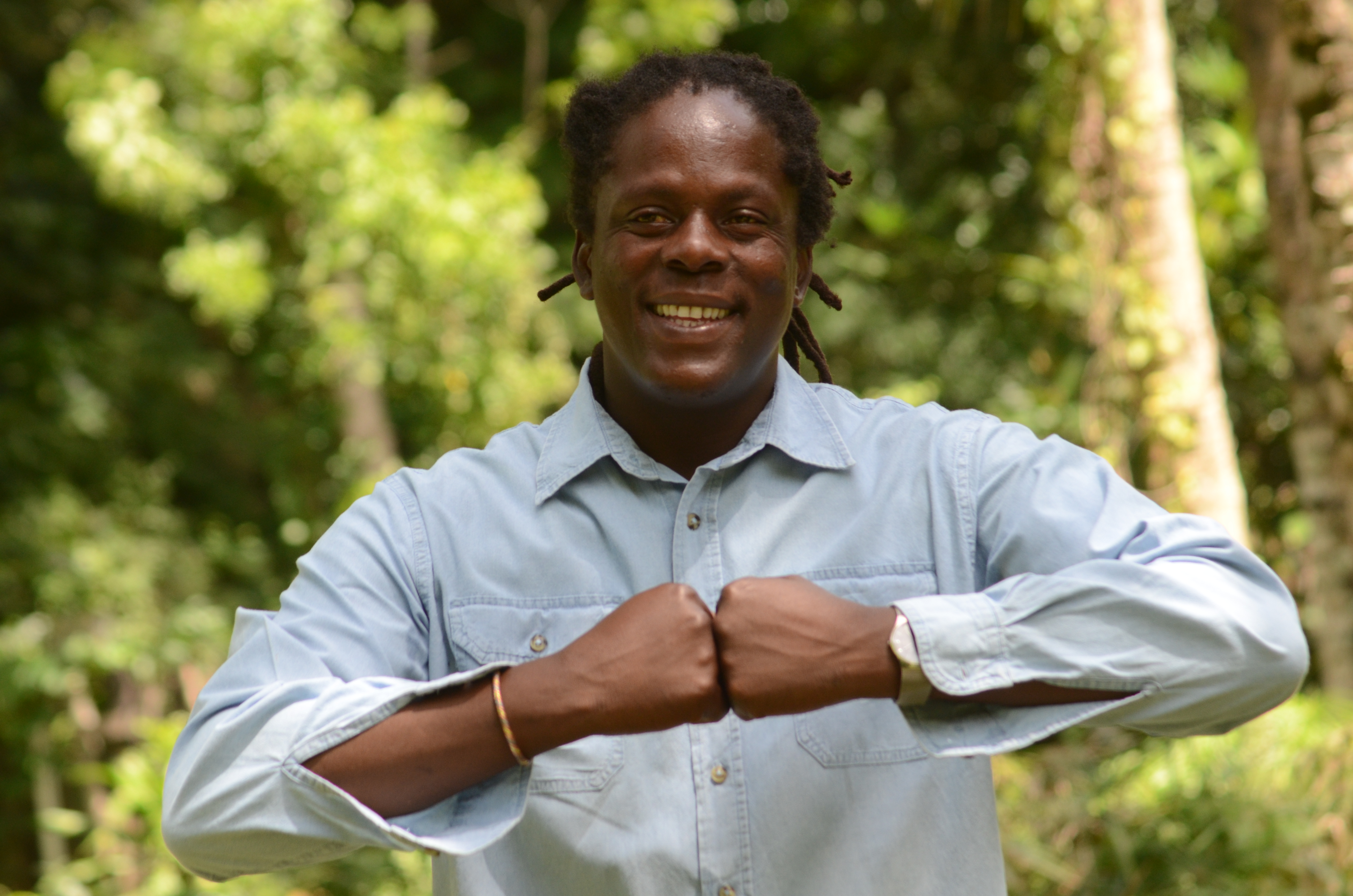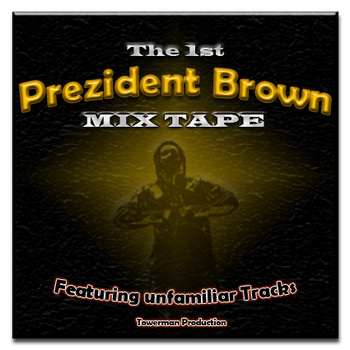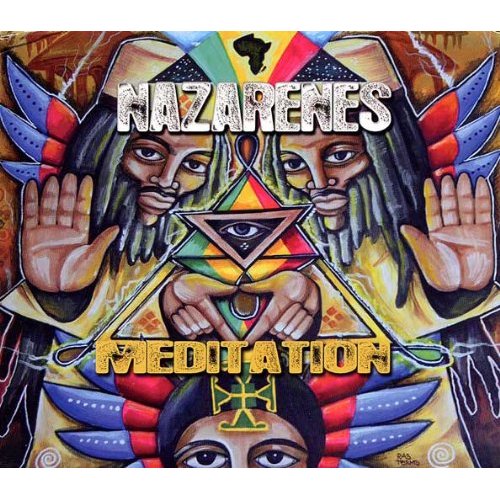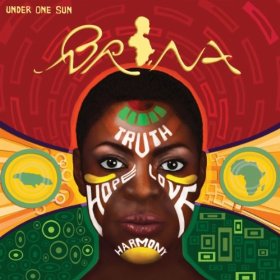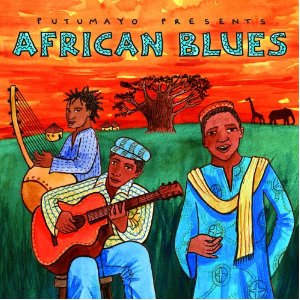“Fire is for the purificaton”
Capleton, “More Fire”
“No water can put out this fire”
Bob Marley, “Ride Natty Ride”
“God gave Noah the rainbow sign:
No more water, the fire next time.”
Afro-American folk song
“The roof, the roof, the roof is on fire,
We don’t want no water, let the m…..f….. burn!”
Traditional chant of R&B artists
It seems to have come to this: Fiya Bun fi real now. Some youths of a generation nursed on dancehall’s fire burn fashion have fudged the line between rhetoric and reality. A few zealots have begun burning down churches and bludgeoning nuns. Verbal arsonists are cutting best-selling records calling for all homosexuals to be executed. Bun Dem! And people in high and low places have begun to ask: where does it all end?
DJ RJ and I have recorded an edutainment special about the Fire Burn controversy titled “Love and Rebellion: Fiya Fi Purification.” It is an aural companion piece to this essay. Readers can hear the show on Daniel Frankston’s first-rate website IReggae.com, at: http://www.ireggae.com/djrj&mc.htm. In addition to a wide range of fire burn tunes, from 1970s roots to 21st century dancehall, the show contains samples of many Jamaican artists commenting on the uses of fire for destruction, and for purification.
The “great controversy” about Fire Burn lyrics has been growing for several years. By the summer of 2000 it had achieved a critical mass, as noted in a commentary on the synchronicities between this and other fiery signs of the times on the RootzReggae website. But by the New Year of 2001, the “official” beginning of the new millennium, the controversy quickly escalated, giving proof that a fuse had been lit that was burning far beyond Jamaican dancehalls.
Just hours before DJ RJ and I first broadcast our Fire Burn special in Austin, TX on Jan. 2, 2001, a 20-year-old Rasta named Kim John and at least one other accomplice started the new year by entering a cathedral on the Caribbean island of St. Lucia and put the fire burn philosophy in practice. According to a report by Mark Fineman in the Los Angeles Times: “Clad in flowing robes and armed with clubs, flaming torches and gasoline cans, the attackers charged up the aisle, randomly dousing and torching a dozen parishioners. One attacker set fire to the priest and the altar. Another bludgeoned to death Sister Theresa Egan, an Irish nun who had worked on the island for 42 years, because he saw the devil’ in her blue eyes.”
According to police investigators, John had a vision in which Haile Selassie anointed him as “the chosen one” and commanded him to free his people from the Babylon System. And the Catholic Churchof which 80% of the island nation of St. Lucia are membersis of course a prime symbol of Babylon for many Rastas, especially for the Boboshantis, who have been calling down fire on the Pope and the Vatican with increasing ferocity in recent years.
Some people downplayed this incident as unrepresentative of “real” Rastas. Others asked, along with Prime Minister Kenny Anthony of St. Lucia: “The question is, if the church is the first victim, who is the next?”
YARDY’S BATTYMAN OBSESSION
The battyman would be a good bet. The battyman, i.e. homosexuals, have been the focal point for more fire burning than any other group or institution. Lately this trend has gotten ugly. One of the songs on the “Love and Rebellion” special was Beenie Man’s “Damn,” in which his first words are: “I’m dreaming of a new Jamaica, come to execute all the gays.”
Come again?
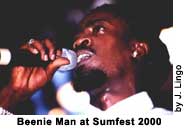 There are many DJs and listeners who share this virulent homophobia, of course. Others are just interested in the vibes of the music, the beats, and don’t question the message. Still others may choose to look the other way, even though they disagree. Especially a foreign (as Jamaicans call the world outside their island), many want to prove that they are down. Criticizing burn battyman music would be seen as proof of having gone soft, of having been corrupted by Babylon. In Jamaica, it seems almost impossible to criticize such lyrics within the culture, without facing accusations of being out of touch (such as uptown intellectuals, etc.), or gay. Beenie Man himself went through this a few years ago. Calling for the execution of gays may just be the way that Beenie Man, ever the chameleon, seeks to re-establish credibility, after cutting some tunes (such as “Better Learn”) that seem critical of the “burn down the queer” mindset.
There are many DJs and listeners who share this virulent homophobia, of course. Others are just interested in the vibes of the music, the beats, and don’t question the message. Still others may choose to look the other way, even though they disagree. Especially a foreign (as Jamaicans call the world outside their island), many want to prove that they are down. Criticizing burn battyman music would be seen as proof of having gone soft, of having been corrupted by Babylon. In Jamaica, it seems almost impossible to criticize such lyrics within the culture, without facing accusations of being out of touch (such as uptown intellectuals, etc.), or gay. Beenie Man himself went through this a few years ago. Calling for the execution of gays may just be the way that Beenie Man, ever the chameleon, seeks to re-establish credibility, after cutting some tunes (such as “Better Learn”) that seem critical of the “burn down the queer” mindset.
But the culture is changing, in part because ground zero of dancehall reggae cannot clearly be located in Jamaica anymore. Jamaica has spread out to off-shore communities like Miami, Toronto, London, and New York. And non-Jamaicans, especially Europeans and Americans, play an ever more important role in the production, promotion, distribution, and consumption of the music. The music’s audience is changing, and there is an evolution of the consciousness of people within the culture. For instance, my Idren DJ RJ in Texan for many years shared the homophobia that is widespread in mid-America. Yet the spiritual values and equal rights philosophy of Rasta Reggae have had a transformative power in his life, leading him to explore other spiritual and political philosophies. So when we did the “Love and Rebellion” special, RJ felt that the time was right to “call Beenie Man on the carpet.” “It doesn’t sound like love and righteousness to me,” RJ said about the burn battyman fashion.
Lyrical murder of the battyman is of course nothing new in Jamaican culture. Buju Banton caused an international firestorm in 1992 with his hit “Boom Bye Bye” (in a battyboy’s head). You can get a sense of how deeply rooted anti-gay prejudice is in Jamaican culture by watching Isaac Julien’s film A Darker Shade of Black, filmed in the wake of the foreign outcry against Buju. I think what has changed the most is a growing awareness among long-time promoters of reggae that this is our culture too. If it is a culture we live in, even part-time, then we have a duty to think critically about the kinds of messages we pass on to our audience; to the next generation.
There comes a time when intolerance becomes intolerable. Can we tolerate the intolerant? Maybe, but increasingly, many of us also feel empowered to resist intolerance, not by condemning it, but by pointing to more attractive alternatives. This means we can’t put our heads in the sand. We have to be clear-eyed about the source of intolerance in the culture we love, that for many of us has become a home.
There is an enormous gap between dancehall’s core audience, a yard (as Jamaican’s refer to their island nation), and reggae’s international audience, which is still dominated by roots and culture fans. The core audience is what those a foreign would call homophobic, and often militantly, proudly so. I’ve reasoned with Jamaican artists who have realized that they can’t voice these sentiments while on tour in Europe or the U.S. But this doesn’t change the way they think, or more to the point, the way they play to the demand for burn-battyman tunes in Jamaica.
“A virulent anti-gay virus infects Jamaica, a too-well-loved disease for anyone to easily eradicate,” writes Stephen Foehr in his new book, Jamaican Warriors. True dat, a well-loved disease. One suspects that the more elites in Jamaica or fans a foreign try to stamp out the rootman’s toxic hatred of the battyman, the more yardies will intensify their rhetorical war against the battyman. Above all, because they know there is a tailor-made audience for this message.
Case in point: in March 2001, a burn-battyman song by the quartet TOK, “Chi Chi Man,” hit #1 on numerous dancehall charts in Kingston, Miami, and New York. Like Beenie Man’s “Damn,” this chart-topper is not just intolerant of gays, it advocates their eradication. The song has been hugely popular, and has even been used in a recent political campaign in Jamaica. But one can’t just blame this phenomenon on yardies: TOK has been touring the United States, and some of its most enthusiastic audiences have been in places like New York and Miami, where the crossover between hip-hop and dancehall, in matters of musical style, sartorial flair, and shared worldview (including contempt for gays) is increasingly evident.
Many artists and consumers in dancehall and rap share a tendency to pose as revolutionary critics of the mainstream, even as they wallow in the excesses of mainstream materialism. And on both sides, one finds both artists and fans who are enamored of gangsterism, bad boy bidness, the rude boy lifestyle, as it was known in Bob Marley’s youth. The line between between rhetorical and real-life gangsterism is hard to draw. Even artists who deny that their words have an influence will freely admit that it is of great benefit, both in terms of artistic credibility and often in terms of sales, to have a background in real-life thuggery. Thus, Tupac Shakur has been turned posthumously into a sort of combination of revolutionary/black messiah, his tremendously profitable iconic status made possible by his violent death, foretold and indeed solicited by his glorifications of the thug life.
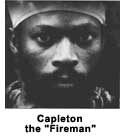 There are similar dynamics at work in Jamaican dancehall, with a social context that lends emotional currency to artists’ fire burn rants. There have been reports of churches being burned down in Jamaica, and youths setting fire to each other’s clothes at concerts. One mother reportedly awakened to find her house on fire, and her daughter chanting the lyrics to Capleton’s “More Fire.” Public concern with the incendiary influence of the dancehall firemen has reached such a level that P.J. Patterson, Jamaica’s first black Prime Minister, has publicly criticized the fire burn mania, and has even met with Capleton to encourage him (unsuccessfully) to tone down his fiya bun routine.
There are similar dynamics at work in Jamaican dancehall, with a social context that lends emotional currency to artists’ fire burn rants. There have been reports of churches being burned down in Jamaica, and youths setting fire to each other’s clothes at concerts. One mother reportedly awakened to find her house on fire, and her daughter chanting the lyrics to Capleton’s “More Fire.” Public concern with the incendiary influence of the dancehall firemen has reached such a level that P.J. Patterson, Jamaica’s first black Prime Minister, has publicly criticized the fire burn mania, and has even met with Capleton to encourage him (unsuccessfully) to tone down his fiya bun routine.
YOU TOO, GARNETT? WHAT GOES AROUND COMES AROUND
In early 2001 Greensleeves released a 12″ single of a recording by the late Garnett Silk, “What Do You Say?” The lyrics sent shock waves through parts of reggae’s transnational community, already abuzz with news of the St. Lucia murder, and other reports of fiya bun run amuk. The hook of Garnett’s tune, repeated over and over, was:
“You don’t love Haile Selassie?
Fire gonna burn You and Your Family”
The lyrics caused an uproar among some American fans, which to me actually seemed out of proportion to the lyrics, which are fairly innocuous, by Jamaican standards. I reasoned about this with my Idren Scottie McDonald, who hosts a reggae show on KTRU in Houston. He seemed to feel betrayed, as if this song had destroyed or tarnished all of Garnett’s other works. My email box buzzed with similar messages from other people in reggae’s well-connected electronic community. Clearly the reaction to Garnett’s use of fire burn lyrics was driven by the contrast they provided with Garnett’s international reputation, which is as a Rasta Prophet.
For roots fans, there is often an undertone of messianic aspirations in the feelings they express about an artist like Garnett. Like Tupac, Garnett became an icon by dying young. The script, the social myth, is that prophets and revolutionaries die young, and dying young becomes the proof of prophetic or revolutionary status. But while Tupac traded on his “thug life” reputation to gain a posthumous reputation as a revolutionary [against the system of white supremacy and/or capitalism, it is claimed, either explicitly or implicitly], Garnett in life wore the mantle of spiritual prophet. This became magnified, in death, with messianic overtones.
What a shock then, for some true believers, when recently a more complete picture began emerging of Garnett Silk as a dancehall artist. In a review of Garnett Silk Meets the Conquering Lion, I contrasted the hype of the liner notes, with Garnett being “hailed as Reggae’s New Messiah,” and the actual lyrics of these dub plates, many of which were “sound boy murders,” with Garnett lyrically “killing” rival sounds.
This could be “forgiven,” as these dub plates were cut when Garnett was a young artist, emerging from the dancehalls. By contrast, “What Do You Say” is supposed to have been one of the last tunes Garnett cut. For those who see him as a prophet of peace and righteousness, it seems to work against everything he stood for. Then there is the strange irony of these lyrics sounding almost like a curse which boomeranged: Garnet and his mother died in a house fire. I hesitate from drawing the obvious moral to the story, but it seems to demand to be spoken: Live by the fire, by fire you will die. “Fire gonna burn you and your family.”
 But I think there’s another moral here. The extent to which even a “prophet” like Garnett Silk was rooted in dancehall’s “fire burn” mentality should be a wake-up call for international fans of reggae. Too many have latched on to a primarily “for export” version of reggae, and have lost sight of the culture from which the music comes. Fortunately, interest in dancehall and Jamaican culture has been spreading. Numerous books about this turf have been published over the last two years. One of the best is Norman Stolzoff’s Wake the Town and Tell the People. Stolzoff’s book is a persuasive, historically grounded study of Dancehall Culture in Jamaica. It could help reggae’s fans (and critics) grasp the reasons for, and rhetorical uses of, phenomena such as Fiya Bun and Sound Boy Killings. A deeper understanding of this culture, I think, would give us a greater appreciation for the evolution of an artist like Garnett Silk, the distance he traveled to create visionary songs like “The Rod.”
But I think there’s another moral here. The extent to which even a “prophet” like Garnett Silk was rooted in dancehall’s “fire burn” mentality should be a wake-up call for international fans of reggae. Too many have latched on to a primarily “for export” version of reggae, and have lost sight of the culture from which the music comes. Fortunately, interest in dancehall and Jamaican culture has been spreading. Numerous books about this turf have been published over the last two years. One of the best is Norman Stolzoff’s Wake the Town and Tell the People. Stolzoff’s book is a persuasive, historically grounded study of Dancehall Culture in Jamaica. It could help reggae’s fans (and critics) grasp the reasons for, and rhetorical uses of, phenomena such as Fiya Bun and Sound Boy Killings. A deeper understanding of this culture, I think, would give us a greater appreciation for the evolution of an artist like Garnett Silk, the distance he traveled to create visionary songs like “The Rod.”
Still, I do not want to downplay a spirit of intolerance that has taken hold. Young rasses have been burning without distinction: burning Jesus and the Bible, even though Selassie was a devout Christian (hear Morgan Heritage’s take on this in “Dem a Bawl”); according to Jabulani Tafari, burning Marcus Garvey and even burning those that burn, like Capleton.
This is a problem not confined to the dancehall, but is part of a much broader tendency, what Deborah Tannen has called The Argument Culture. Trying to destroy those we disagree with, or those who are merely different, has become a way of life. It is a part of the Babylon System which one sees on TV, on the streets, every day of the week: tribal war, Us vs. Them, played out over and over, a cycle of violence, both lyrical and literal. This is a phenomenon that challenges us not just to condemn, but to create more attractive alternatives.
In this context, I see something positive coming out of the Fire Burn controversy: a new sense of community is emerging among those who produce, promote, and consume dancehall and reggae. People in the community have been doing some necessary soul-searching about the state of the culture, and about their place in it. I think that an awareness is emerging that this music provides a forum for discussing important issues that go far beyond the music. So the critique of the Fire Burn mentality, if done consciously, should also become self-critique, and critique of the world we live in. In an email to my Idren DJ RJ, Marlon Regis, author of The Beat column “Musical Murder,” write: “Society is not a reflection of the music, it’s the OTHER WAY around. The riddims may be wicked, their flow even rhythmic, but the message is indeed STAGNANT, not to mention DIGRESSIVE. A reflection that SOCIETY NEEDS TO CHANGE.”
Or as Cocoa Tea sings in “Blood a Run,” a musical critique of the social consequences of an unchecked Fire Burn mentality: “We need a change in attitude.”
THE ROOTS OF FIRE BURN: NO WATER CAN PUT OUT THIS FIRE
One of the beauties of participating in bass culture over time is the historical context it provides, a sense of continuity with a tradition and a community with very deep roots. Dancehall is an extremely fashion-conscious turf, yet it also continuously recycles riddims and lyrics from the past. Scratch and you uncover a historical perspective on the fads of the present.
The past year, I’ve been asking my roots-and-culture friends, “is there a place for fire in Zion?” Almost inevitably, they say no. They see the core message of Rasta Reggae as one of love and righteousness. Yet the notion of fire burn has always had a central place in the imagination of reggae artists. Fire illuminated the vision of those artists who sang of a Zion towards which we were marching, the more attractive world towards which we moved on our Exodus from Babylon. If fire burn has no place in Zion, then are we willing to lock Bob Marley out of Zion gates?
I think of the many examples of outrage, of lyrical violence, of fire burn, that fill Marley’s songs. In “Talkin’ Blues,” he professed: “I feel like bombing a church, now that I know the preacher is lying.” The Wailers’ first Island album was titled Catch a Fire, taken from the song “Slave Driver,” in which the sense of fiery vengeance is clear:
“Slave Driver, the tables are turning
Catch a Fire, you’re gonna get burned”
The Wailers’ second album Burnin‘ featured “Burning and Looting.” Yet Marley was a master of lyrics that spoke on many levels, that combined notions of physical revolution and spiritual evolution. His own interpretation of this song, which youths reportedly sang during the L.A. Riots as they sacked stores, was as follows: “It’s not literally about burning down the city, it’s about burning down certain illusions in our mind so as to live in one harmony.” Marley clearly understood that there were destructive and constructive uses of fire. Although he warned about destruction, he aimed for reconstruction. This reconstructive mindset is clear on the remake of “Burning and Looting” from Chant Down Babylon, when over the sound of sirens, Bob intones “stop them,” and “it’s not the music of the ghetto.” I.E., destructive uses of fire should not be the music coming out of the ghetto. We have to stop them from destroying themselves.
Marley’s thinking about fire takes many forms, but is expressed perhaps most memorably in “Ride Natty Ride.” He tells a parable to a leader trying to give a speech on a beach, but a dread cuts him off, saying “fire is burning, man pull your own weight.” He clearly voices a notion of fire as an invaluable resource:
“there is something that they can never take away,
and that’s the fire, burning down everything…
No water can put out this fire.”
Marley’s conception of fire here combines a revolutionary fire, which burns down a corrupt world, but he is also talking about an inner fire, the passion for justice, the fire of a spiritual vision that lights our path.
 This is a Biblical vision of fire. It has been forwarded by many contemporary artists who use Marley as a reference point to portray fire as a spiritual resource, and as a potential force for reconstruction. For instance, Marley’s line “no water can put out this fire” is repeated by Jah Mali in “No Water” and by Morgan Heritage in “Don’t Haffi Dread.” But there are times when the old has to be destroyed to make way for the new. This is the context of Marcia Griffiths’ remake of the Bob Andy tune, “Fire Burning,” and of “Fire (Is the Desire)” by Justin Hinds and the Dominoes. The fires of “progress,” of uncontrolled human development and greed, and burning out of control. The people are yearning for change. Dread times are here, and when the tables turn, “the haves will want to be in the shoes of the have nots.”
This is a Biblical vision of fire. It has been forwarded by many contemporary artists who use Marley as a reference point to portray fire as a spiritual resource, and as a potential force for reconstruction. For instance, Marley’s line “no water can put out this fire” is repeated by Jah Mali in “No Water” and by Morgan Heritage in “Don’t Haffi Dread.” But there are times when the old has to be destroyed to make way for the new. This is the context of Marcia Griffiths’ remake of the Bob Andy tune, “Fire Burning,” and of “Fire (Is the Desire)” by Justin Hinds and the Dominoes. The fires of “progress,” of uncontrolled human development and greed, and burning out of control. The people are yearning for change. Dread times are here, and when the tables turn, “the haves will want to be in the shoes of the have nots.”
Capleton has been roundly criticized for his fire burn lyrics. Yet his defense of the importance of fire is persuasive. Capleton insists that he is not encouraging anyone to light their clothes, or burn a church. He emphasizes, like Marley, that “It’s not a literal fire, it’s a spiritual fire. Fire’s all about the livity.” Fire is a source of purification, Capleton says repeatedly. “Water cleanse, but still the fire have to burn water to purify it. The herb is the healing of the nation but still the fire bun the herb so the herb can heal. Fire is the main source of life universally. Fire make everything move, and there is no life if there is no fire.”
Like many Rasta artists, Capleton uses the Biblical example of Shadrach, Meshach and Abednego, who in Daniel 3 walked through a fiery furnace without getting burned. In this sense, fire is a force that tests our faith, and if our faith is strong enough, then we not only survive moments of crisis, we emerge strengthened.
Perhaps this would be the best way to come to terms with another troubling aspect of the Fire Burn controversy, which is the black supremacist philosophy of the Bobos, and the willingness of some artists to fire burn on white people, or Europeans, whom in some branches of Rasta, are still seen as an enemy to be expelled, along with the battyman and the Vatican.
THIS IS MY CULTURE TOO: EUROPEANS IN THE HOUSE
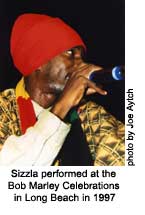 One of the prime sources of creative energy during the “Rasta Renaissance” of the mid-1990s was the emergence of a group of fire-breathing Boboshanti artists such as Sizzla, Anthony B, and Capleton. (“The Bobo Dread” by Barry Chevannes) If the main voices of the early 1990s flowering of conscious reggae were culture artists such as Luciano and Garnett Silk working within the “One Love” wing of Rasta, the Bobos forwarded a very different vibe. In contrast to the emphasis on unity and spiritual growth of the Twelve Tribes branch of Rasta, the Bobos advocated a philosophy of black supremacy. They seemed much more interested in condemnation of enemies, than the unification of allies.
One of the prime sources of creative energy during the “Rasta Renaissance” of the mid-1990s was the emergence of a group of fire-breathing Boboshanti artists such as Sizzla, Anthony B, and Capleton. (“The Bobo Dread” by Barry Chevannes) If the main voices of the early 1990s flowering of conscious reggae were culture artists such as Luciano and Garnett Silk working within the “One Love” wing of Rasta, the Bobos forwarded a very different vibe. In contrast to the emphasis on unity and spiritual growth of the Twelve Tribes branch of Rasta, the Bobos advocated a philosophy of black supremacy. They seemed much more interested in condemnation of enemies, than the unification of allies.
Sizzla quickly earned a reputation as the “angry young man” of the Bobo Dreads. His passion and undeniable talent energized many young people of reggae’s international audience, whose mood often was closer to Sizzla’s anger than to Luciano’s inity. But Sizzla’s relentless Afrocentrism had a shadow side: “white people.”
At the 1998 Sumfest, according to a report in Reggae Nucleus Magazine by RudeGal, Sizzla went on a “rampage” after performing “Near & Far. “He said: “See all the white people in Jamaica? They don’t belong here. Go way! Bun the white people in Jamaica! Bun all the people backstage. Bun all the people outside. Bun dem, bun dem!”
This incident inspired intense discussion on the internet reggae newsgroup (rec.music.reggae) for months afterwards. Some DJs said they would not play Sizzla any more, and some in fact have never forgiven him. On balance, however, this attitude doesn’t seem to have affected Sizzla’s reputation much. A reporter asked Sizzla how he thought European people should react to his Afrocentric fire-burning:
“Don’t be afraid of the fire,” Sizzla responded.
I remembered my second visit to Jamaica in 1988, when I brought along my fiancée, an Afro-American with braids. We experienced relentless hostility from the locals in Montego Bay. Among the printable things they told me was, “go home white boy, you ain’t got no culture.” I bought Dennis Brown’s “Death Before Dishonor,” which expressed the same sentiment:
“Go Away and stay away,
you ain’t got no culture;
go away and stay away,
you’re acting like vulture.”
Our host was a Rasta who raised pigs on a farm he had carved out of the rocky hills with his Australian wife. He took us to the airport and asked how we had enjoyed Jamaica. I told him about the racial hostility we had encountered. He gave me some advice I’ve never forgotten: “Jus relax, mon.” That was it. Don’t sweat it, just take it easy, and everything will be all right.
So I can’t think of Sizzla’s advice without laughing, remembering my Jamaican host. There’s certainly a double standard involved in the culture, kind of like the dynamics in black comedy clubs, where it is routine for black comics to racially insult white guests, in a way that would be unthinkable if the roles were reversed.
|
Mutabaruka
|
This too has been an occasion for self-reflection, and critique, among reggae’s audience. I remember how much Mutabaruka s assertion “It no good to live in the white mon country too long” rang true for me, even though I’m of Irish ancestry. That line, echoing back to Marcus Garvey, made sense to me. I have never wanted to live in a Eurocentric culture either.
Yet as a long-time participant in Bass Culture, I have become increasingly uncomfortable with certain forms of racialism. I like to turn things on their head. What would be our reaction if a European artist said “Burn black people”? Could this artist turn around and say “Don’t be afraid of the fire” with a straight face?
I played Sizzla’s “Get We Out,” from the Reggae1Luv double CD Liberate Yourself: Sizzla and Bredren, for DJ RJ. The very first words of the song are, “All white subjects out of Ethiopia.” “I can’t use that,” RJ said, athough he loved the riddim. “If you started censoring Sizzla because he’s a racialist, you wouldn’t have much left,” I pointed out. I am personally comfortable with expressions of black pride, and yet when Sizzla obsessively addresses himself to black people over and over, I begin to tune out. This was why I stopped listening to hip-hop in the early 1990s. Too many artists like X-Clan were demonizing the “cave boy oppressor.” I support artists who speak to the community I live in, which is a multi-ethnic community. Sizzla does not speak to the concerns of a multi-ethnic community, although Junior Reid, another Bobo, articulated what drew so many of us to Rasta reggae in the first place with his anthem “One Blood.”
In Rasta reggae, there have always been dual themes: expressions of racial unity, but also another part of the culture obsessed with opposition to the white man. DJ RJ and I did another edutainment special about this phenomenon, in the wake of the Sizzla “burn white people” controversy. It’s called “White Boy a Follower? From Black Supremacy to One Love’ in Rasta Reggae.”
We used many samples in this show to illustrate these dual themes, from Bobos discussing the concept of Black Supremacy on Muta’s show, to Prophet Gad, the founder of the Twelve Tribes, quoting “One Blood” from Acts 17:26 to argue against any notion of racial separatism. Rasta is a culture that has evolved a long way, from a chant of “death to white oppressors” in the early days, to the slogan “death to black and white oppressors,” which has been repeated frequently by artists from Bob Marley to Capleton. This expresses the view that oppression is a force that transcends race.
I think that as reggae and dancehall become ever more transnational, the international audience in particular will have to struggle with the question: what is our place in the culture? This seems to be a particularly vexing question for Europeans and Euro-Americans, as long as there are artists like Sizzla and groups like the Bobos who seem to define their allegiances and their enemies in primarily racial terms (http://www.oneworldmagazine.org/focus/etiopia/rasta.html).
The right time has come for making a case for Europeans claiming a place in the culture. In my book On Racial Frontiers, I’ve made this argument on historical grounds, including the evolution of Rasta as a part of a history of international and multi-racial freedom movements in which the notions of “Black liberation” and “multi-racial redemption (“One Love”) co-exist. For Europeans to go on acting like outsiders to the culture (or accepting that definition), merely praising “the black man’s culture,” seems to be yet another form of mental slavery. When we develop enough wisdom to claim this as our culture too, this brings a new set of responsibilities. Which means, in my view, that if we are going to be part of Sizzla’s fan base, then we need to find ways to engage Sizzla in dialogue about his attitudes towards the fair-skinned people who provide him with the majority of his royalties. So let’s think of another take of that old story of Shadrach, Meshach and Abednego. Sizzla’s predominantly European audience truly doesn’t need to be afraid of the fire, because if they check the roots of the historical struggle for equal rights and justice, they will find it has always been a multi-ethnic, international movement. So wouldn’t it be just if we began to expect artists like Sizzla to begin acknowledging our presence in his artistic vision?
Back in 1929, speaking on the anniversary of Emancipation in the English-speaking Caribbean, Marcus Garvey said: “We must create a second emancipation: an emancipation of our minds.” It is a short leap from this to Bob Marley’s paraphrase: “Emancipate yourselves from mental slavery: none but ourselves can free our minds.” Yet it is also a great evolution in consciousness. One of the central forms of mental slavery against which Marley did battle was the very notion of racialism itself. Marley was a Garveyite, and yet he did not call himself a black man, he called himself a Rasta. He said repeatedly that Europeans and Asians could also be Rastas, if they put the teachings of Selassie into practice, in particular the vision of a world of equal rights guaranteed to all, “without regard to race.”
This is a historical evolution comparable to Christianity’s shift from a Jewish tribal religion, to an inclusive community that was “neither Jew nor Gentile, male nor female, slave nor free.” Thus Rasta is no more just a “black man’s culture” than Christianity is a “Jewish religion.” But this has been an incomplete revolution. “The problem with emancipation is the fact that the chains on the mind are often even more binding than the chains on the body,” Carolyn Cooper has written. And the mental slavery of hateful opposition to those who do not look or think like us has turned out to be a form of bondage much more enduring than physical slavery.
The fire burn controversy has come at the right time. Because the time is riper than ever for those of us who love this music and culture to begin to re-define who we are. The youths have come up knowing much more clearly what they oppose, than what they stand for. All of us need to play a role, as my Idren Norman Bonner has said, to create an atmosphere in which “producers and artists will generate, and DJ’s will play, songs that celebrate diversity and understanding, and condemn bigotry and lethal prejudices.”
|
Angela Davis
|
Regarding the fire burn white people mentality, I remember another piece of sage advice. This was from Angela Davis, who I once heard give some constructive criticism to a conference in which speaker after speaker was obsessively trashing white people. A workable multi-ethnic coalition, Davis said, would be one in which “white people are neither centered nor excluded.” Those who claim to be creating alternatives to the history of Eurocentrism cannot do so if they continue to center on Europeans, even and especially through mere opposition.
There are two forms of subservience, the historian David Hackett Fischer once wrote: “slavish imitation and obsessive refutation.” Either extreme is a form of “mental slavery.” And surely the obsessive fire burning on enemies named as the battyman, the Vatican, or the white man, is a form of subservience. Again, I believe that the whole community needs to come together in a reasoning to obtain a clearer definition of what it really is we oppose, and what it is we hope to create as an alternative.
If we only know what we oppose, then we will be left with ashes. Which is the end game of fire burn, as I once heard a black woman sing one dawn in San Diego, to the tune of “Oh how I love Jesus”:
“Oh how I love fire, oh how I love fire, oh how I love fire,
Cause everything turns black when it burns.”
BURN BABYLON WITH NO REGRETS
I have written this essay primarily with a non-Jamaican roots audience in mind, particularly those of us who live in more privileged areas. I think that it is easy to lose sight of why so many youths are angry. And I think that in these times of crisis, we need to remember the need for anger, and rebellion.
Norman Stolzoff writes, “roots reggae had become something of an orthodoxy to these primarily white fans, and it blinded them to the larger musical culture.” The larger culture of which he speaks still “mus ragamuffin to stay alive in this time.” Youths in the Caribbean, like many urban youths elsewhere, face widespread underemployment. Many live in ghettos in which violent death is commonplace. They go to schools, if they go at all, that teach them out-of-date information. Leaders do not speak to them, and for the most part seem corrupt. The youths have contempt for institutions of all kinds, which all seem invested in the status quo.
Same as it ever was: “Babylon system is the vampire, sucking the blood of the sufferers.”
Babylon has been described by Jack Johnson-Hill, in his book I-Sight: The World of Rastafari, as “an artificial affluent society of self-absorbed individuals who worship idols and live decadent lifestyles at the expense of the poor.”
And I ask my readers: does that ring a bell? Isn’t that a pretty good description of the “rat race” in which most of us live?
So when I hear Prince Malachi sing “burn down Babylon with no regrets,” I say “we don’t want no water, let the Babylon System burn.” The youths of today have looked at the world they have inherited, and they have apparently agreed with Bob Marley’s worst-case scenario: “It seems like total destruction is the only solution.”
I think we should be able to agree on the need to at least metaphorically “burn down” an unjust, unsustainable lifestyle that only serves the interests of the rich, and is destroying the earth. Our so-called leaders are in denial, or just don’t care, in their search for greater political and economic gain. We can’t even have a dialogue with the youth of today if we can’t affirm that there are many things about which all of us should be angry, those who want “betterment.”
Maybe from that starting point, we can begin to talk about learning to channel anger in more constructive directions. Maybe then the verbal arsonists will grasp the truth of what Gandhi once said, that “an eye for an eye leaves the whole world blind.” The battyman, the Bible, and the Buckra are not the enemyin fact they all have something important to contribute to our collective emancipation.
“Judge not that you be not judged,” is a teaching that one finds in all world religions. And it’s still timely. Regarding the fire burners, Mikey General told JahWorks.org editor Laura Gardner: “some of them are casting judgement and not purging their own self. That can’t be right.”
 In an interview with Carter Van Pelt, Luciano affirmed the need for rhetorical burning of certain things. He noted that he had “burned fire” on a cigarette advertisement he found along the stage at one of his performances. But to “just burn without a reason or without control, without knowledge, is dangerous to I & I also,” said Luciano. “They say love without knowledge is no love at all. We cyan afford fe spill more blood for the spilling of that blood.”
In an interview with Carter Van Pelt, Luciano affirmed the need for rhetorical burning of certain things. He noted that he had “burned fire” on a cigarette advertisement he found along the stage at one of his performances. But to “just burn without a reason or without control, without knowledge, is dangerous to I & I also,” said Luciano. “They say love without knowledge is no love at all. We cyan afford fe spill more blood for the spilling of that blood.”
Rasta-influenced reggae music, says my friend Andrej Grubacic in Serbia, is “a culture of love and rebellion.” He and thousands of allies used reggae music as an organizing tool to rebel against the dictatorship of Milosevic. But Rasta Reggae gave them a model of not only what they opposed but also the more attractive alternative they wanted to build. Andrej and Luciano are both part of the culture in which I live. And they both overstand that fire and rebellion can be used either for purification, or for destruction. Ultimately the way they are used depends on our consciousness. Getting more conscious in our time means that we must learn how to engage in controlled rebellion, and not just opposition. Because if we only know what we oppose, then we become like what we hate. To create a more attractive alternative to the Babylon system, our rebellion must be guided by love. Love of justice, and ultimately, love and respect for all life.
“Those who say, I Love Jah,’ and hate their brothers and sisters, are liars; for those who do not love a brother or sister whom they have seen, cannot love their Creator whom they have not seen” (I John 4, adapted)
Preliminary Comments About “The Fiya Burn Controversy” by Gregory Stephens
- Excellent article.
– Clinton Fearon - Very informative and inspiring. I sense this as an important contribution towards the complete r-evolution and solution. The replication of this vibration is necessary for the emancipation of all nations.
Peace…
– Kwayko Blandella - A fantastic, timely, and crucial article! I am glad somebody comprehensively addressed so many things that have been on my mind…
Peace and RASpect to all those who keep up the fight for love and against evil in all forms! Here’s looking to a day when all Rastafar-I can unite and trust one another without question or judgement!
– DJ Firewater, NYC - Excellent article, very interesting and informative. At the end, I was reminded of something that Lee Perry told me in an interview when I was asking him for details about the song “Public Jestering”: “You mean the people who want to have a crowd, a big crowd, and because they don’t really want you to know the word about Rastafari, about God. They want to create a big thing, and people say “yes, he is the man now!” People like Mutabaruka, who was public jestering on the radio in Jamaica. Mutabaruka is one of the public jesterers. And he jester very much on the radio in Jamaica, and people believe him. He jester about the white man taking away from the black man, but this is because the black man was stupid! To let the white man take away what is yours. If you have something and they want, leave them take it, because they won’t have it for long. So instead we should be creating love between the black and white so we can have a better nation. Because when black is working together, we are too greedy, and when white is working together, them are too greedy. But when we have black and white mix, then we all understand and have control and say “look, you are being too greedy, you are taking too much of mine, let’s talk about it before we have a fight”. So we can create a black and white nation in unity – one God, one aim, one destiny – instead of the black want it all and the white want it all, and create a tug of war, and cause public jestering.”
-Mick - i enjoyed the article and radio program on fire burn. listening to gregory’s show, it sounded like he read my vibe column about sizzla bunning white people in jamaica at sumfest a few years ago. i’ll never forget seeing him tell that older european lady “don’t be afraid of the fire”.
– respect, rob kenner
Vibe Magazine - Loved the “Love and Rebellion” cds. And the elucidation on “fire burn” brought me up to speed in one swell foop – I like the idea of the fire as purification – iron sharpening iron as it were.
– One Heart, Roger Steffens
Bob Marley Archivist
